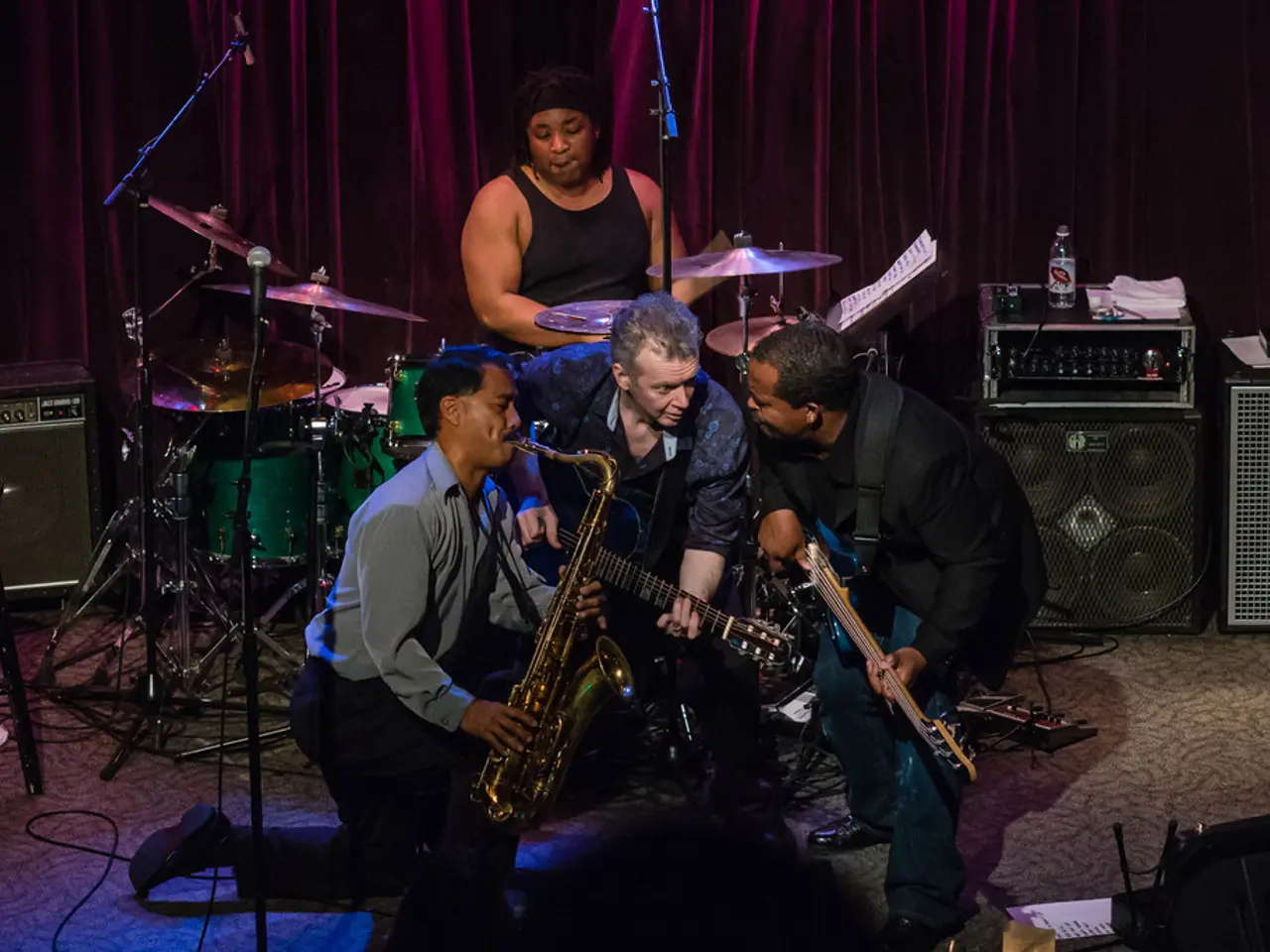Adjusting Reverb Time Settings: Steer Clear of Muddiness and Boost Clarity
In the realm of music production, understanding the interplay between time and tone can significantly enhance the way you shape sound in your mixes. This guide will delve into the intricacies of reverb and delay, two effects that can add warmth, character, and depth to your tracks.
For vocals, achieving the perfect balance between clarity and ambiance is crucial. This can be achieved by using shorter reverb times and experimenting with pre-delay settings. Modulating reverbs with Low-Frequency Oscillators (LFO) can also add dynamic movement to audio by modulating parameters like decay time or wet/dry mix.
In electronic music, syncing delays to triplets or half notes can create intricate rhythms, while in rock, longer reverb times, such as those for a hall, contribute to a spacious sound. In a studio setting, using a pre-delay calculator helps position vocals in a mix, ensuring they sit comfortably within the overall soundscape.
To create depth and dimension in your sound, a combination of shorter delay with subtle modulation can bring out the best in vocal tracks. In live settings, a moderate reverb time that accommodates both the venue's natural acoustics and the live mix works best.
The best practice for calculating reverb time based on BPM and time signature is to match the reverb decay time to a rhythmic subdivision related to the tempo. This ensures the reverb tail complements the groove and timing of the track. To do this, calculate the length of a beat in seconds using the tempo (BPM), and then choose a rhythmic division for the reverb decay based on the time signature and musical context. Set the reverb decay to match or slightly trail this value, creating a natural-sounding ambience that fits rhythmically in the track.
Additional tips include sidechaining the reverb to the dry signal for clarity while keeping the rhythmic feel intact, adjusting reverb type depending on the musical style or instrument, and using smaller decay times for recording studios to avoid muddying the mix and longer decay times for concert hall ambiance if appropriate for style, independent of BPM.
Experimenting with different reverb settings impacts the mix's atmosphere, while calculating the right reverb time involves measuring the acoustics and dimensions of your space. Delay effects are significant in shaping the tone by adjusting the delay time, which is the interval between the original and repeated sounds. Combining a specific tool for measuring beats per minute with reverb presets tailored for a hall can highlight an orchestral piece's grandeur.
Key parameters for achieving a natural sound include decay time, pre-delay, and the wet/dry mix. Convolution reverb, which uses impulse responses to emulate real acoustic spaces, offers a more natural and complex reverb effect. Apps like AudioTools or RTAP are handy for more precise measurements during live setups, while tools like DAW plugins that offer built-in calculations for reverb and delay can streamline the production process.
In pop music, reverb settings often mimic a small room, offering a natural feel without overwhelming vocals. Delay and reverb can significantly enhance spatial effects in a mix, with delay before reverb creating complex, layered textures. By following these guidelines, you can elevate your mixes, adding a new dimension of depth and atmosphere to your music.
- For music production, especially for vocals, it's essential to achieve a balance between clarity and ambiance, using techniques like shorter reverb times, pre-delay adjustments, and low-frequency oscillator modulation.
- Delay effects can significantly shape the tone by adjusting the delay time, creating intricate rhythms in electronic music or spacious sounds in rock, while a combination of short delay with subtle modulation can bring out the best in vocal tracks.
- In a studio setting, using gadgets like pre-delay calculators can help position vocals correctly in a mix, ensuring they blend well with other elements in the soundscape.
- Experimenting with different reverb settings, such as decay time, pre-delay, and wet/dry mix, impacts the mix's atmosphere, with convolution reverb offering a more natural and complex effect.
- Technology, like apps and DAW plugins, can provide tools for more precise measurements and calculations during music production, helping to streamline the process and enhance the final sound.




